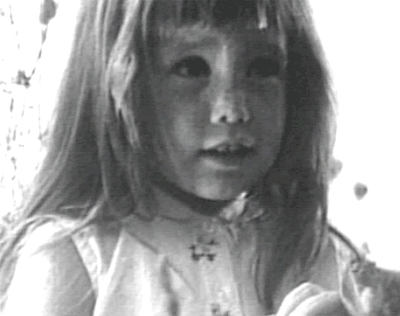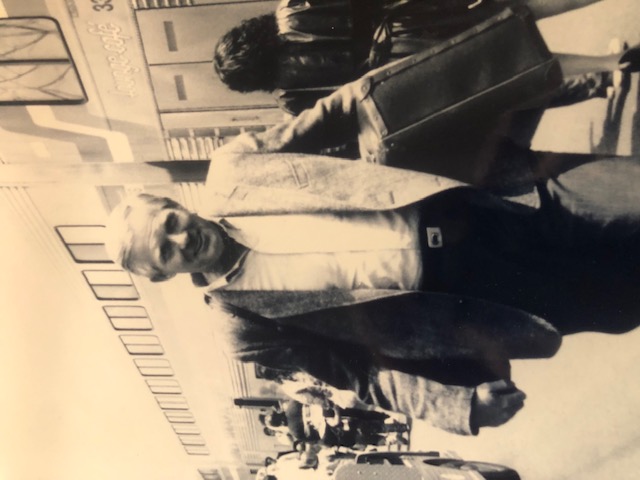
The Daisy Commercial
We handled 211,000 Voter’s Research Hotline calls that 1992 Election, with many times that number of calls not able to get through at all. You would think I could do the math and listen to reason.
If we grew as the numbers suggested and I thought we would and mostly did, we would need a room big enough for a thousand phones.
Scott Langley, a young genius grad student who volunteered in our IT Department, gave a lot of thought to our dilemma, when he was not thinking about Gundula, a drop-dead gorgeous brainiac intern from Germany. Unrecognized by me, the love affair, unrequited I think, forecast a number of future Vote Smart trials. Life with the young!
Scott approached me one afternoon and suggested that we create a web site, put all our researched data on it and let people review it for themselves.
Like many of an older generation I dismissed this innocent naive young pup. “No way Scott, isn’t gonna happen” I firmly ruled. “It took the telephone a hundred years to saturate 97% of American households. Everyone has access to a phone, you do not need to know how to type, you do not need to have an education, you do not need an expensive computer, you just need to be able to dial. Hell, you do not even need your own phone, you can just go to a pay phone on any street corner and dial our 1-800 number. Forget it.”
I successfully fought Scott and his growing number of young web site intern advocates from burdening us with some real progress. Finally, they got so irritatingly bothersome that I chucked a couple thousand dollars at them just to shut the Hell up.
I do not really know how they did it, I didn’t pay much attention. In hindsight, they put in a few bazillion extra hours and then asked if they could go live and announce our data was on the “Vote Smart Web.”
You have to understand here that this is back in the early 90s, no one had such a website, not news organizations, universities or anyone else.
“Jesus Christ! OK, OK, get out of here,” I bellowed.
Some weeks later, Scott and his little gang surrounded me and handed me a single white sheet of paper. It turns out that they had in those weeks more inquiries for our data on the Vote Smart Web than we had in the prior three years over my cherished phoneasaurus.
We attracted a great many more users of our factual data, which attracted some curiosity from other foundations.
Foundations do not often fund good governance efforts, or what they called “googoos,” largely because it is difficult to measure success in governance or in our case, making smarter voters. In fact, there was considerable evidence that American voters were becoming dumber.
Anyway, those foundations willing to give a pittance of what they have, saw some pretty solid evidence of our success with those we could reach. We could show a lot of people trying to use what we had done, quite a few that would send in contributions to help, and actually generating more volunteers and interns willing to work for free than we could afford to accommodate. Most importantly to foundations, we were a new group and thus a new find for some foundation staffer that wanted to look good in a board meeting.
Most major foundation staff had an attitude: all had the power (dollars) to lord over non-profit startups, they knew it, and insisted that you knew it too. Having a humble, subservient hang-dog demeanor was the rule for all non-profits. Even as the staff of large foundations existed on the droppings of some dead person’s pile of success from long ago. As consequence, a lot of groveling was involved.
My discussions with smaller foundations, where the source of their funds was often still breathing and happy to meet with me, were very different, always fun, and included lively conversations where I could harvest new knowledge and ideas.
Russ Hemingway, a 78-year-old with rugged good looks, created a foundation that supplied millions to congressional candidates. Because of his political bent, I would not accept money from him but that was not all I was after. Firsthand experiences on how things got to be such a mess could be as valuable as cash in hand.
As a young man Russ had been Adlai Stevenson’s (a Democratic presidential nominee beaten by Dwight Eisenhower in the 1950s) Campaign Manager. Of all the wisdom he pumped into my brain this unknown story is amongst the best. Adlai was campaigning from the back of a caboose somewhere in the mid-west on what was called a “whistle stop tour” when Russ saw the first political television commercial ever produced. It was done by Eisenhower. Rushing to catch up with the train, Russ told Adlai he had to get off that caboose and go cut a commercial, that Eisenhower was talking to millions in their living rooms on these new televisions while Adlai only a few hundred at each stop. Adlai refused to get off the train, saying, “If we are to advertise ourselves like boxes of cereal, democracy will die, for you could not win the Presidency without proving you were unworthy of the job.”
Russ, the “young pup” of his day, eventually broke Adlai down and they did cut a silly commercial with some woman singing “Vote Stevenson, vote Stevenson, a man you can depend on-son……!”
Candidates quickly caught on to the new power of simplistic mass massaging soon enough. A few years later Lyndon Johnson cut one of the most effective political ads ever aired. It was anchored in the height of the Cold War. In 1964, Goldwater had responded to a reporter questioning whether he would ever consider using a nuclear weapon with, “It is just another weapon” and he would not lay his cards on the table in front of our nation’s enemies. A pretty stand answer that had been given by our other leaders for almost 20 years. But this was right after the Bay of Pigs and the Cuban Missile Crisis, when Americans had been digging holes in their back yards to hide from the end of the world. Johnson saw his chance and created what was called the “Daisy Commercial.” It filmed an innocent little girl in a pasture counting the petals on a daisy while a nuclear bomb explodes in the background, and Goldwater saying, “It is just another weapon.” Its point: Goldwater is crazy and if president, would start a nuclear holocaust should conflict with Viet Nam escalate.
The commercial was incredibly successful even though Johnson paid to play it only once. It was played over and over as a news story on all the networks, and started a media feeding frenzy that Goldwater would not survive. Johnson would not even have to play his grossly unfair back up commercial, one no one saw, where he unfairly imagined Goldwater with the burning crosses of the Ku Klux Klan.
Over the coming years our board meetings would take place at the Capitol Building or in various congressional offices in Washington, where most of our founding board resided. Little ever changed from the original concept of collecting factual data and laying it out in free, easy-to-access categories.
And, of course, the three basic rules to protect Vote Smart’s integrity were scrupulously maintained: 1. Board members with political reputations had to join with a political enemy. 2. We accepted no funding from any organization that lobbied, supported, or opposed candidates or issues. 3. All staff signed up for a two-year election cycle or whatever remained of one, and was paid only Peace Corps-style wages—just enough to subsist on.
My foundation groveling became modestly successful, raising a few hundred thousand dollars during each of a half dozen election cycles.
To give you some idea of how we attracted foundation support: A most promising grant was given so we could test our programs in disenfranchised communities with low civic involvement. We selected a few dozen precincts around Atlanta and San Francisco and saturated them with Vote Smart programs while staying completely out of other similar precincts. When the election ended, I asked a wonderfully supportive good friend, prominent professor, and survey specialist, who I asked to join our board, Dr. Brent Steel to do a survey. Using a team of students making calls he went back into those precincts to see if any impact could be measured. To our happy surprise we found that those groups receiving our programs got excited about their ability to impact governance and each of these precincts measured a 5% higher “confidence in government” rating than those not receiving our programs. As Brent reported, in the world of civic engagement in a single election season, that is huge movement. But then, as happens with large foundations, their board leadership changed and neither they nor any other foundation was interested in continuing what had been a previous board’s idea.
After some years of such foundation behavior my anger with large foundation arrogance would boil over in an interview, I gave a publication for foundation executives called The Chronicle of Philanthropy. The interview would scald Vote Smart for years to come.
(New chapters will be added roughly once a week)
Richard Kimball, Vote Smart Founder
Sign up on my Blog at: richardkimball.org
or
Medium.com at: https://medium.com/@daffieduck2016
